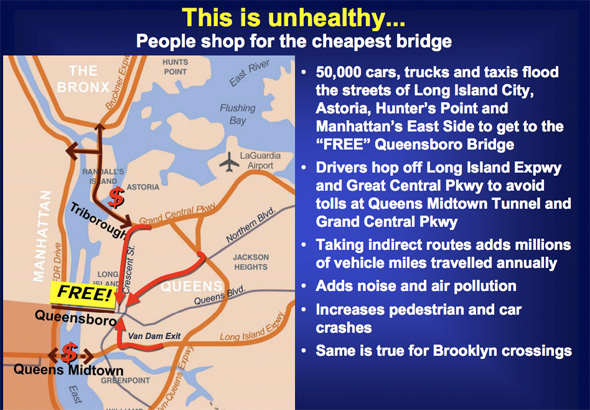
Since the beginning of 2008 -- right around the time that Albany legislators failed to enact congestion pricing -- NYC subway and bus fares have been hiked three times. Now the fourth fare hike in five years is on the horizon, and with Albany lawmakers sitting on their hands as MTA revenues fail to keep up with costs, there's no relief in sight for millions of transit-riding New Yorkers.
Today MTA Chair Joe Lhota announced four options under consideration for the 2013 fare hike. The scenarios are weighted so that the fare hike will either fall primarily on riders who buy unlimited Metrocards or on those who mainly buy pay-per-ride cards. Monthly unlimiteds could cost $21 more, or single fares could go up to $2.50 from $2.25. (The Straphangers Campaign has produced a handy chart [PDF] to see how each option would affect your expenses.)
Either way, this string of hikes puts the fare on pace to triple the rate of inflation, according to a recent report from Comptroller Thomas DiNapoli. While working families in New York City end up paying hundreds or even thousands of dollars more out of pocket to cover higher fares, Governor Cuomo and the state legislature haven't shown any intention of stepping in to help. In fact, they've made the situation more precarious by raiding the MTA's budget and weakening the agency's dedicated funding.
It doesn't have to be this way. At any point, Albany could help to lessen the burden on working New Yorkers while simultaneously eliminating a source of enormous dysfunction in the region's transportation system: the discrepancy between the free East River bridges and the MTA's tolled crossings, which produces debilitating traffic jams and will only get worse as fares and tolls rise under the status quo.
The solution? Cuomo and the legislature could enact "Gridlock" Sam Schwartz's "Fair Plan" [PDF], as Gene Russianoff of the Straphangers Campaign noted in a statement today:
Blocking or reducing the fare increase is possible, if we get more help from Albany. One promising plan is to generate new revenue by both raising and lowering tolls on city bridges and tunnels in line with where there is the most and least congestion. Under this plan – developed by a former New York City traffic commissioner Sam Schwartz, known as Gridlock Sam – tolls would go down on some facilities (like the Throgs Neck and Verrazano-Narrow Bridges) and be instituted on others (Brooklyn and Manhattan Bridges.) The State would need to authorize some of the tolls.
So far, Transportation Alternatives has collected more than 15,000 signatures asking Albany to stop the next fare hike. If you sign on, I suggest adding a note about the Fair Plan.





